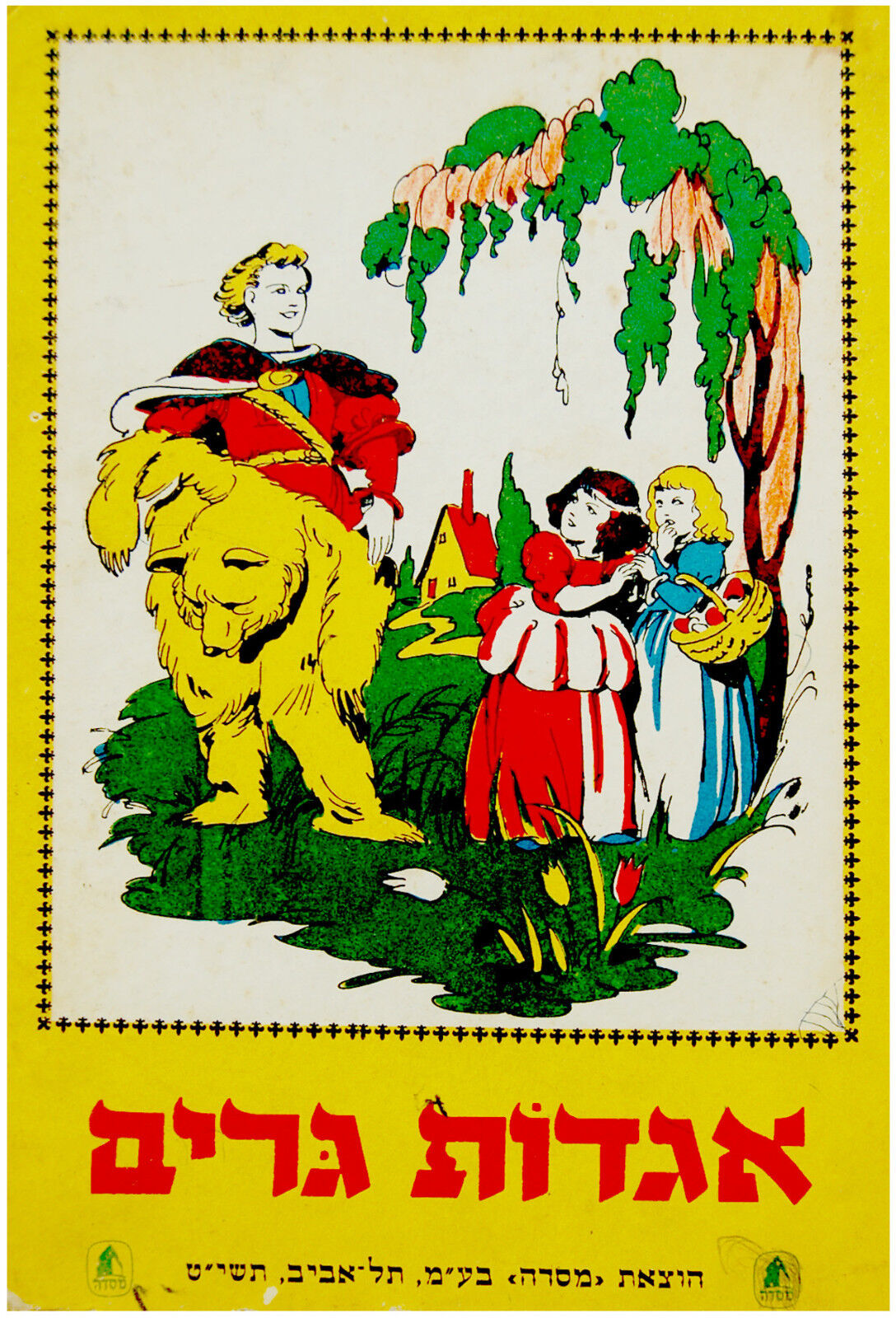1958 Israel LITHO CHILDREN BOOK Hebrew BROTHERS GRIMM Jewish JUDAICA Tel Aviv

When you click on links to various merchants on this site and make a purchase, this can result in this site earning a commission. Affiliate programs and affiliations include, but are not limited to, the eBay Partner Network.
1958 Israel LITHO CHILDREN BOOK Hebrew BROTHERS GRIMM Jewish JUDAICA Tel Aviv:
$75.00
DESCRIPTION : Here for sale is avintageRICHLY ILLUSTRATED over 55 yearsoldJEWISHHebrew ERETZ ISRAELI children\'s book , Whichwaspublished in 1958 in TEL AVIV Eretz Israel by Massada .The ILLUSTRATIONS in thisbook are COLORFUL STONE LITHOGRAPHS. Thebook \" TALES of the BROTHERS GRIMM \" consists of two children stories . All in shortened Hebrew translation . Numerous giant FULL PAGE LITHOGRAPHIC illustrations . FULL PAGE lithographic COLORFULillustrations,colorful LITHOGRAPH Printing. The book is RARE. Original COLORFULillustrated HC. LITHOGRAPH .Giant size. 9\"x 12\". 32 throughout illustrated unpaged pp including LITHOGRAPHIC PLATES . Very goodcondition . Tightly bound. Slight wear ( Pls look at scan for as-is images ) .Will be sent inside a protective rigid envelope .
PAYMENTS : Payment method accepted : Paypal.SHIPPMENT : SHIPP worldwide via registered airmail is $14 . Book will be sent inside a protective envelope . Handling within 3-5 days after payment. Estimated duration 14 days.
The Brothers Grimm (or Die Gebrüder Grimm), Jacob (1785–1863) and Wilhelm Grimm (1786–1859), were German academics, linguists, cultural researchers, lexicographers and authors who together collected and published folklore. They are among the most well-known storytellers of folk tales, popularizing stories such as \"Cinderella\" \"(Aschenputtel)\", \"The Frog Prince\" (\"Der Froschkönig\"), \"Hansel and Gretel\" (\"Hänsel und Gretel\"), \"Rapunzel\", \"Rumpelstiltskin\" (\"Rumpelstilzchen\"), and \"Snow White\" (\"Schneewittchen\"). Their first collection of folk tales, Children\'s and Household Tales (Kinder- und Hausmärchen), was published in 1812. The brothers spent their formative years first in the German town of Hanau. Their father\'s death in 1796, (when Jacob was eleven and Wilhelm ten), caused great poverty for the family and affected the brothers for many years. They both attended the University of Marburg and at the same time developed a curiosity for folklore, which grew into a lifelong dedication to collecting German folk tales. The rise of romanticism in the 19th century revived interest in traditional folk stories and represented a pure form of national literature and culture to the brothers. With the goal of researching a scholarly treatise on folk tales, the brothers established a methodology for collecting and recording folk stories that became the basis for folklore studies. Between 1812 and 1857 their first collection was revised and published many times and grew from 86 stories to more than 200. In addition to writing and modifying folk tales, the brothers wrote collections of well-respected German and Scandinavian mythologies and in 1838 began writing a definitive German dictionary (Deutsches Wörterbuch), that remained incomplete in their lifetime. The popularity of the Grimms\' collected folk tales endured well beyond their lifetimes. The tales are available in more than 100 translations and have been adapted by filmmakers including Lotte Reiniger and Walt Disney, with films such as Snow White and the Seven Dwarfs and Sleeping Beauty. In the mid-20th century the tales were used as propaganda by the Third Reich; later in the 20th century psychologists such as Bruno Bettelheim reaffirmed the value of the work, in spite of the cruelty and violence in the original versions of some of the tales that were sanitized. In the 19th century two separate German versions were retold to Jacob Grimm and his younger brother Wilhelm Grimm, known as the Brothers Grimm, the first by Jeanette Hassenpflug (1791–1860) and the second by Marie Hassenpflug (1788–1856). The brothers turned the first version to the main body of the story and the second into a sequel of it. The story as Rotkäppchen was included in the first edition of their collection Kinder- und Hausmärchen (Children\'s and Household Tales (1812)).[15] The earlier parts of the tale agree so closely with Perrault\'s variant that it is almost certainly the source of the tale.[16] However, they modified the ending; this version had the little girl and her grandmother saved by a huntsman who was after the wolf\'s skin; this ending is identical to that in the tale The Wolf and the Seven Young Kids, which appears to be the source.[17] The second part featured the girl and her grandmother trapping and killing another wolf, this time anticipating his moves based on their experience with the previous one. The girl did not leave the path when the wolf spoke to her, her grandmother locked the door to keep it out, and when the wolf lurked, the grandmother had Little Red Riding Hood put a trough under the chimney and fill it with water that sausages had been cooked in; the smell lured the wolf down, and it drowned.[18]The Brothers further revised the story in later editions and it reached the above mentioned final and better known version in the 1857 edition of their work. It is notably tamer than the older stories which contained darker themes.
1958 Israel LITHO CHILDREN BOOK Hebrew BROTHERS GRIMM Jewish JUDAICA Tel Aviv:
$75.00
